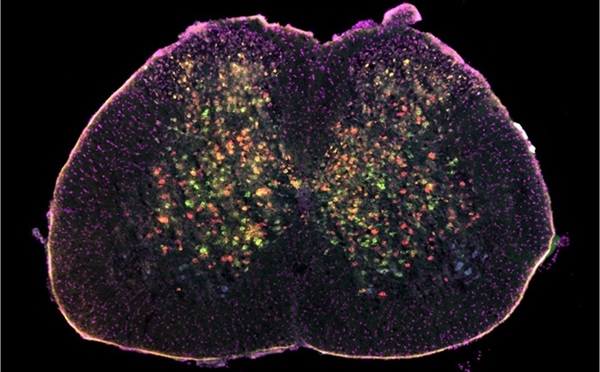Novel AI-Based Analysis Method Uncovers New Insight into ALS Progression
Posted on 02 Jul 2024
Amyotrophic Lateral Sclerosis (ALS) is a fatal condition where motor neurons, which are crucial for controlling movement, progressively die. Currently, there is no cure for ALS, and patients typically live between 2 and 5 years after diagnosis. Now, in a new study published in Science Advances, researchers have shown how to leverage artificial intelligence (AI) to gain deeper insights into ALS progression.
The study, led by researchers from the School of Psychology and Neuroscience at the University of St Andrews (Scotland, UK), in collaboration with the Department of Neuroscience, University of Copenhagen (Copenhagen, Denmark), found that certain neural circuits that control movement are compromised early in the disease, while others deteriorate later as the disease progresses. The techniques used in the study allow for the simultaneous analysis of multiple cell types within the spinal cord, enhanced by an innovative AI-driven analytical method. This enabled the identification of specific networks of cells that are impacted early in the disease process before the motor neurons actually die. These networks include subgroups of inhibitory interneurons, which are essential for activating motor neurons that control movements like walking and running.

The findings indicate that different types of cells, namely inhibitory and excitatory interneurons which regulate various movement aspects by activating motor neurons, are affected at different stages of ALS. Inhibitory interneurons are impacted early in the disease, while excitatory interneurons suffer as the disease progresses. The AI-based method developed by the team improves the quantification of this data. Their approach uses advanced techniques to identify which cell types are key contributors to the disease. These cells are notably diverse and mixed within the spinal cord, making them challenging to study simultaneously. The AI model developed by the team helps overcome these challenges and sheds light on new potential treatment targets. This methodology is available online, aiming to support further research in this field.
“We used techniques that allow us to visualize and quantify multiple genes at the same time with single cell resolution in the spinal cord of the ALS mouse model”, said lead researcher Dr Ilary Allodi, lecturer in Systems Neuroscience at the School of Psychology and Neuroscience. “Each cell type can be identified by a specific set of genes, but these genes need to be visualized simultaneously. By using these transcriptomic techniques, we were able to differentiate between inhibitory and excitatory populations and among their subpopulations. This allowed us to investigate their fate during different stages of disease progression.”
Related Links:
University of St Andrews
University of Copenhagen







 assay.jpg)





